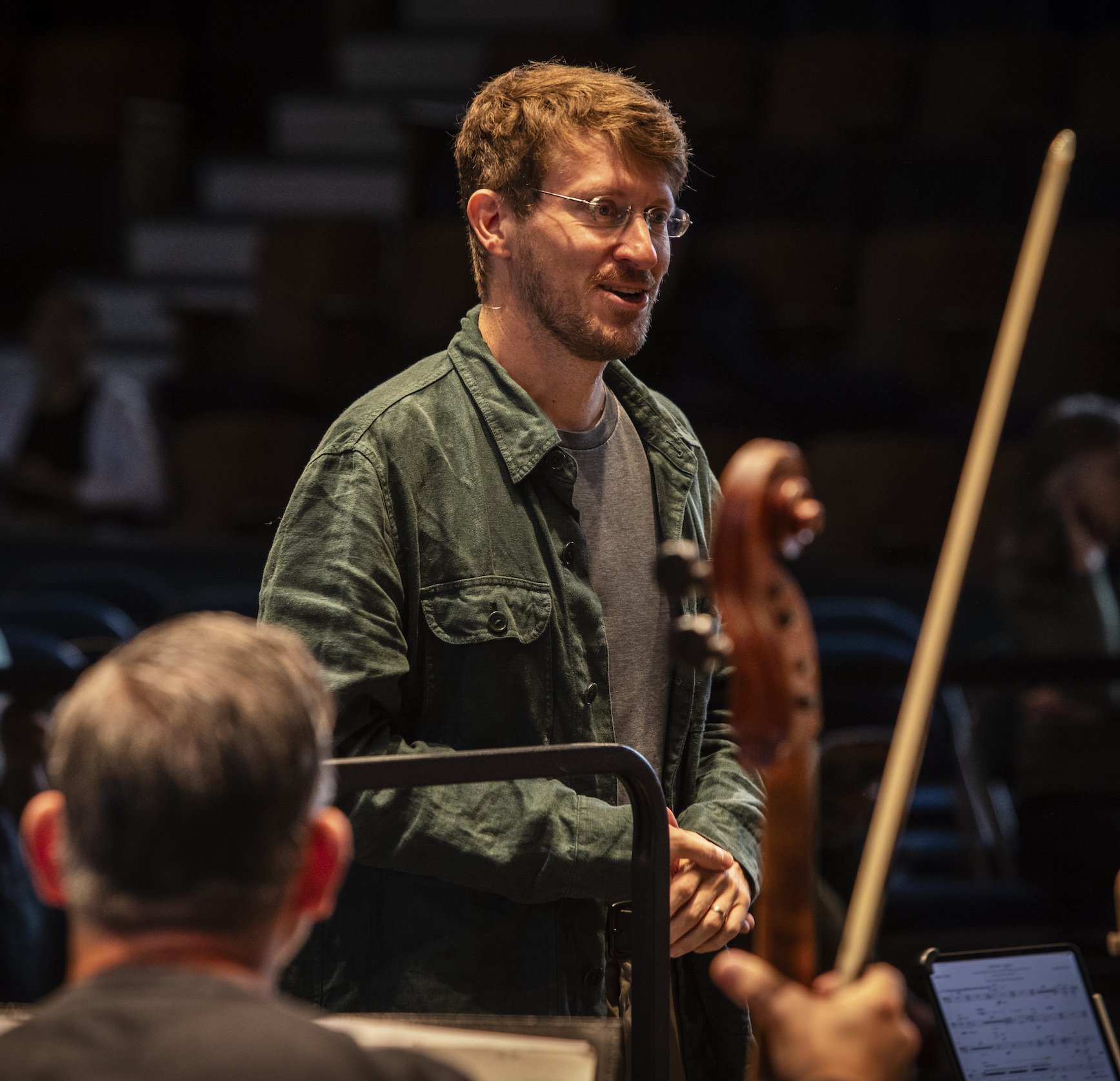Tell Me Again
A new cello concerto composed by Lembit Beecher for Karen Ouzounian, Tell Me Again received its world premiere with conductor Eric Jacobsen and the Orlando Philharmonic, and its West Coast premiere with conductor Cristian Măcelaru and the 2024 Cabrillo Festival Orchestra.
To request archival audio and score, CONTACT US.
Lembit Beecher writes about Tell Me Again for The Strad.
“We recorded excerpts of music from the middle of the second movement and I allowed myself to be distracted for several days creating a stop motion animation to accompany this music. This unexpected animation detour allowed me to explore the emotional world of the piece in a very different way, and underscored for me the importance of this moment within the arc of the concerto: I realised this melody from the first movement could be transformed into something deeply personal and become the key to connecting the three movements.”
Program Notes
Tell Me Again was written for cellist Karen Ouzounian and premiered by the Orlando Philharmonic Orchestra with Eric Jacobsen conducting. Both Karen and I grew up with stories of family origin and migration. My grandmother was Estonian: she escaped during the latter part of World War II, eventually immigrating, along with my seven-year-old mother, to the United States after 5 years in displaced person camps. Karen’s grandmother was Armenian: she grew up in Beirut, her own parents having been driven out of Turkey during the Armenian Genocide, and Karen’s parents and grandmother immigrated to Canada during the Lebanese Civil War. As I wrote, I thought about the importance of these stories to our respective families. I think that for all of us, but particularly those who have lived through upheaval and trauma, telling a story is not just a way to convey a sequence of events but a way to process experience, to try to come to terms with and have some degree of power over the forces that have shaped our lives. With Tell Me Again, I wanted to write music that reflected the way in which stories like these become a central part of the culture of families and communities as they are told over and over again—even as they change over time—with each new generation consciously or unconsciously making choices about what to omit and what to emphasize.
In the first movement I thought of the solo line as the embodiment of a story, forming and unfolding in response to the jittery, chaotic energy of the orchestra, which surrounds the cello with the swirl of life. As the orchestra leads, the cello responds with short, echoing gestures. The orchestral music keeps starting over, returning to the same phrases—like a mind replaying the same events over and over—and in response the cello gradually acquires a life of its own, pulling melodic strands and fast passagework out of the orchestra’s textures, gaining momentum and gradually coming into its own. About two-thirds of the way through, the cello arrives at a soaring melodic line that it holds on to for the rest of the movement. The orchestra now follows the cello, gradually fading like a memory slowly being replaced by a story.
In the second movement, the cellist becomes a singer, teaching the orchestra a song. The cello’s melodic line combines of elements reflective of Karen and myself, starting with the snapped lilt of an Armenian melody and ending with a quote of an Estonian folk-tune, Meil Aiaäärne Tänavas, that I first heard as a child. The melody spreads across the orchestra, repeated in a call-and-response style typical of Estonian folk singing, and gradually evaporates, settling into a tender and shimmering texture: a return of the cello’s soaring music from the first movement, this time quietly introspective. The movement ends with the Armenian-Estonian melody played in fragments across the orchestra.
The third movement begins with a cadenza, the solo cello playing repeated 16th notes, almost as if it were scrubbing with an eraser, trying to overwrite the memory of earlier movements. As the orchestra begins responding to the cello, joining in its perpetual-motion energy, hints of music from the previous movements reappear, including a majestic, slowed-down version of the cello’s first movement melody, played by the horns. After a suddenly soft, wistfully fluttering middle section, the music resumes with energetic abandon and exuberance—sometimes joyful, sometimes fearful, sometimes grand—spiraling out of control until it gives way to a brief, unexpected coda: a glimpse of something that is new and hopeful, yet bittersweet.
—Lembit Beecher





Tell Me Again
Part I: In Which a Story Emerges
Part II: A Song Sung with Others
Part III: In Motion
Instrumentation: 2.2.2.2 – 2.2.0.0 – perc(1) – strings
Duration: 25 Minutes
Commissioned by the Orlando Philharmonic Orchestra and Eric Jacobsen, Music Director